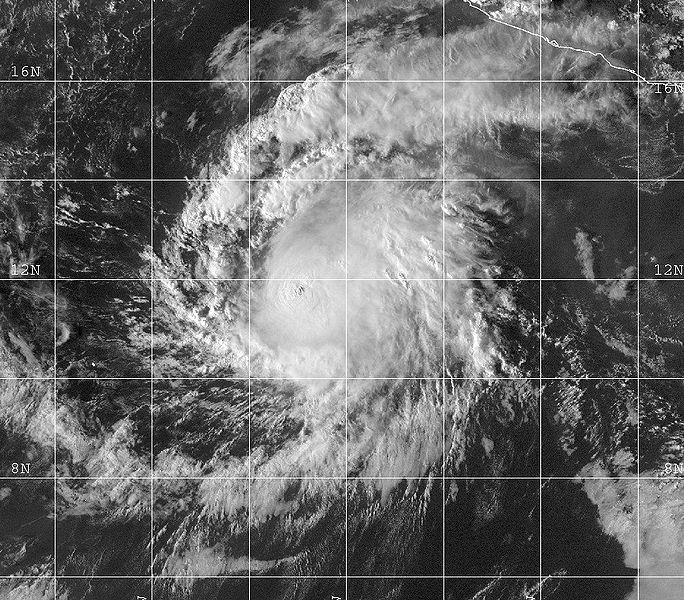Hurricane Patricia peters out over Mexico; no deaths reported
October 26, 2015
By Tim Johnson
MEXICO CITY — In just 40 hours, the weather system that became known as Hurricane Patricia grew into the fiercest hurricane ever recorded in the Western Hemisphere, threatening calamity on Mexico’s Pacific Coast, only to fizzle into a weak tropical depression after it came ashore.
Hurricane experts said quirky conditions nurtured the storm’s rapid growth and intensity. Its winds topped out at 200 mph by midday Friday. Warmer than normal Pacific temperatures, combined with calm atmospheric conditions, helped the storm bulk up.
Veteran hurricane chasers voiced dread at the potential of the Category 5 storm as it approached Mexico’s Pacific coast.
“Still can’t believe what’s just offshore. You’d have to be a Cat-5 idiot not to be scared of it. Despite years and years of chase experience, I’m just in awe of this one,” wrote Josh Morgerman from La Manzanilla in Jalisco state, near where the eye of the hurricane passed.
Patricia struck hard near Cuixmala in Jalisco state, but within hours had degraded to a tropical storm over Zacatecas state. By noon Saturday, its sustained winds were barely 35 mph and dissipating fast. While property damage was extensive, not a single fatality was reported.
Experts said the dissipation of the storm, caused by hitting rugged coastal mountains, was far less surprising than its colossal and rapid buildup. Hurricanes often weaken significantly upon hitting mountainous terrain. And since no major city was in its path, Mexico was spared a high toll.
But the rapid growth of the system from a collection of thunderstorms Thursday to the most powerful storm ever was all but unexpected.
One factor was that ocean temperatures in the eastern Pacific off Mexico currently are averaging about 87 degrees Fahrenheit, and that’s close to the warmest ever recorded.
“Those warm waters extended to great depth so as the hurricane moved over those waters and stirred them up, the waters that came to the surface … didn’t have a cooling effect,” said Jeff Masters, director of meteorology at Weather Underground, a weather forecasting service.
“The storm was able to draw a tremendous amount of heat energy out of the ocean,” he said.
Adding to that was a lack of wind in the upper levels of the atmosphere. Such winds can shear updrafts in a building hurricane, weakening it. Without them, Patricia was able to form and strengthen quickly.
A third factor was high humidity. Masters said relative humidity of nearly 80 percent off Mexico’s coast was “a powerful source of energy” for the storm since condensation releases heat energy, which strengthens winds.
Those conditions helped Patricia intensify its winds by about 100 mph within a day, turning it into a monstrous, powerful storm acting with the force of a tornado near its compact eye.
Such conditions have existed elsewhere at other times around the world, but hurricanes rarely form so quickly with such strength.
“Patricia did that, and it reached its maximum potential intensity, and that’s really a rare occurrence. We really don’t understand why it doesn’t happen more often,” Masters said. “We’ve never measured winds that strong anywhere in the world.”
Luckily, the storm struck land at 6:15 p.m. Friday in a sparsely populated area of Jalisco state with pristine beaches and resorts the primarily serve the ultra rich. Twitter postings and photos from indicates heavy damage and mass flooding in the towns of Cuixmala, Emiliano Zapata, Costa Careyes and Melaque.
But Puerto Vallarta, the Pacific resort city popular with U.S. and Canadian tourists, which is about 50 miles to the northwest, received far weaker winds and less rain. Commercial flights to and from Puerto Vallarta, which had been canceled Friday, resumed Saturday morning.
If Mexicans felt they dodged a bullet, they had reason. Patricia was the first Category 5 hurricane to land in North America since 2007, when Hurricane Felix hit the sparsely populated border between Honduras and Nicaragua.
———
©2015 McClatchy Washington Bureau
Visit the McClatchy Washington Bureau at www.mcclatchydc.com
Distributed by Tribune Content Agency, LLC.








